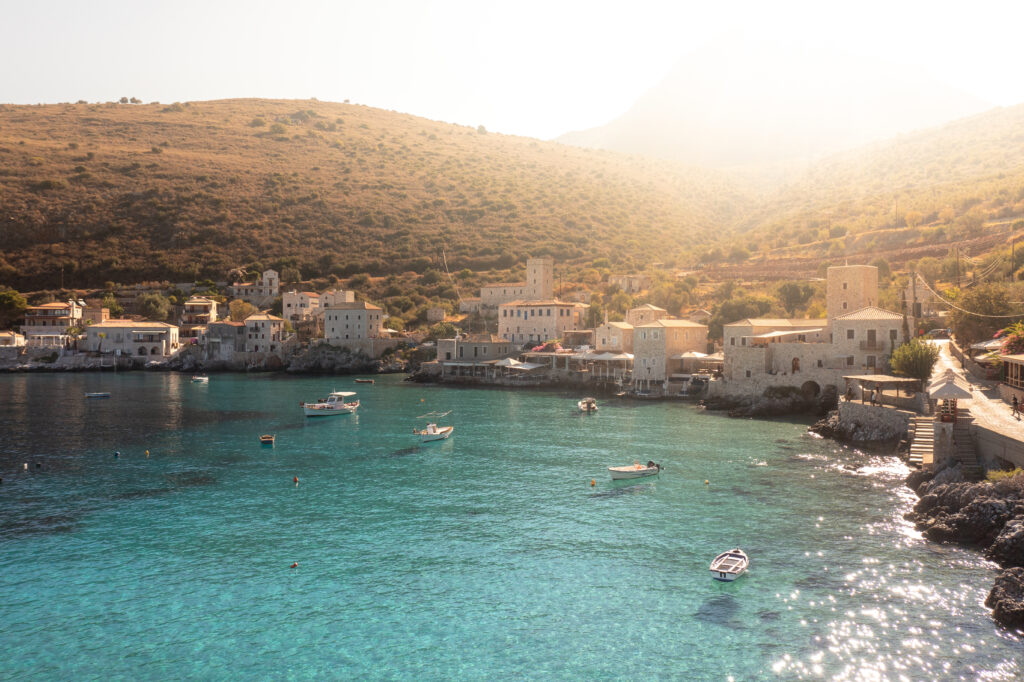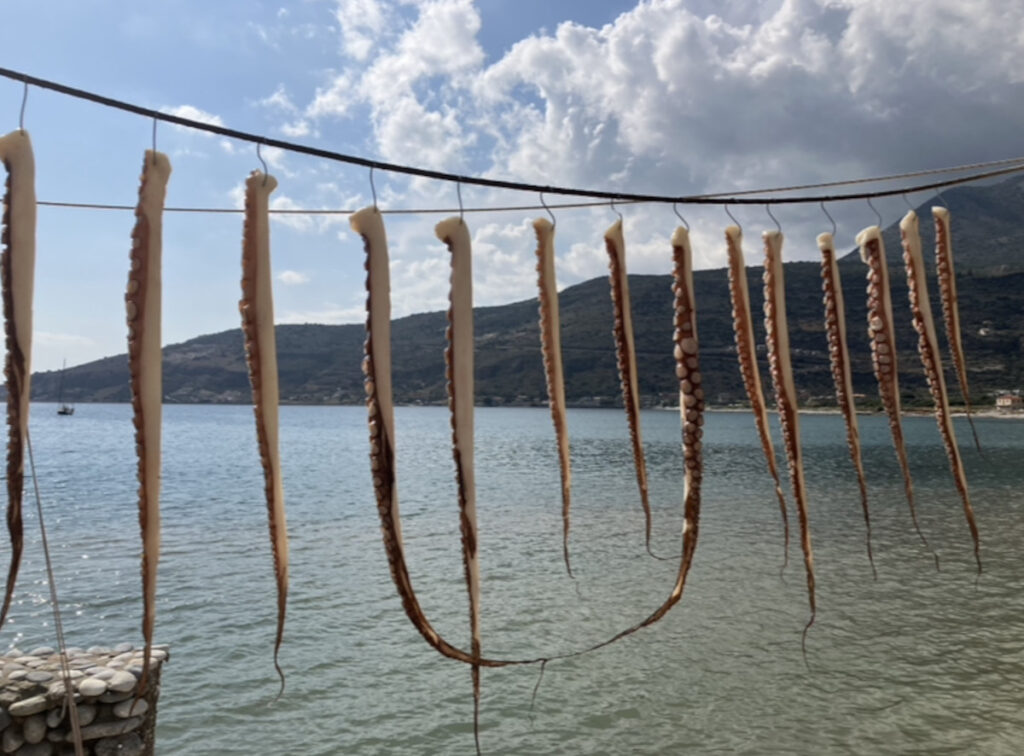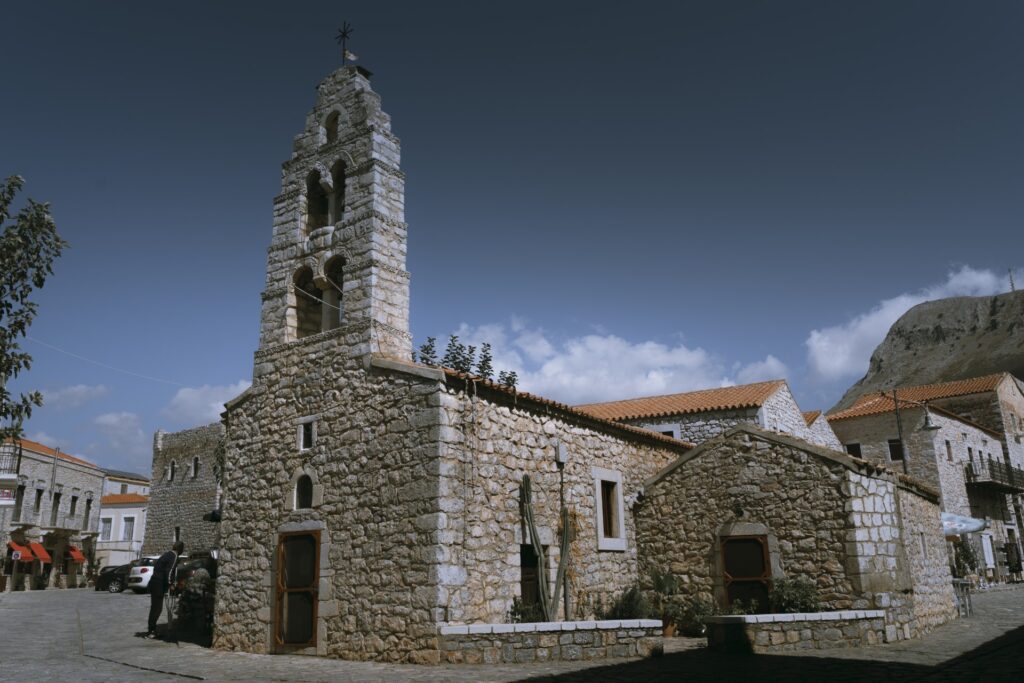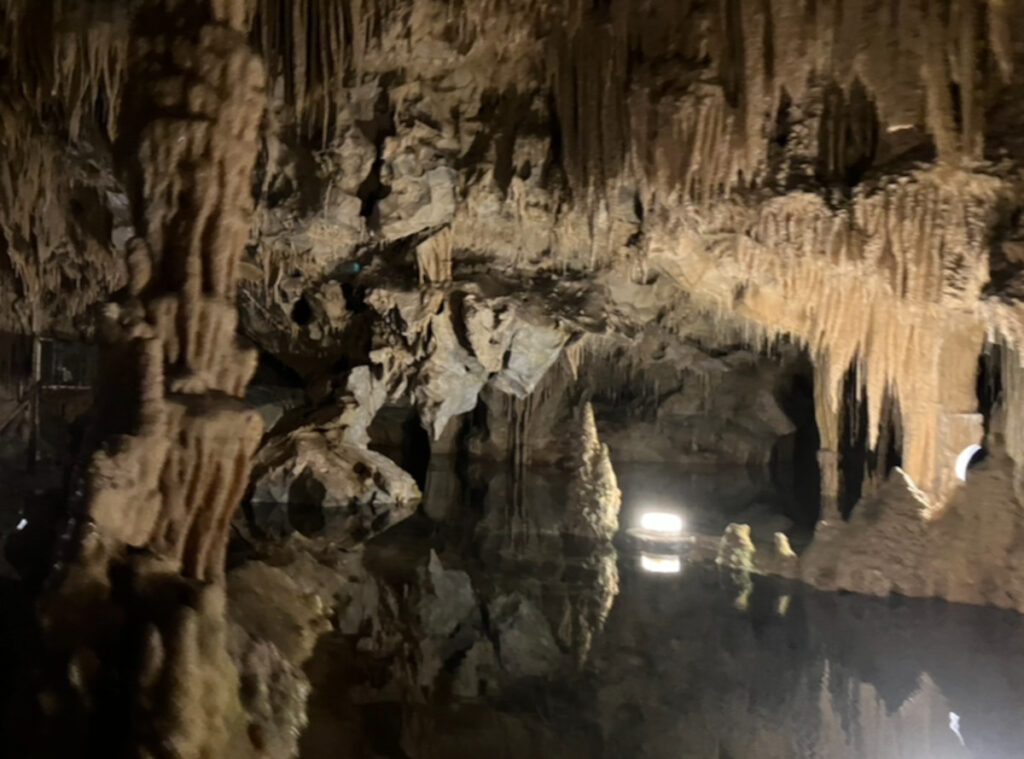By Jeanie West
LYING in bed in a boutique hotel in the Greek Mani, a wild bucolic place in the Peloponnese nurtured for centuries by Mother Nature and now undergoing a rediscovery, the howling is at first unsettling. It’s loud, mournful, wolf-like and offers up a hint of Halloween. But this is mid May – the start of the holidays.
“What the hell is it?” – we are still pondering this as we order dinner the next evening by the mesmerising view of an untamed bay and an illuminated swimming pool. “Jackals,” says the matter of fact waiter – as though he were discussing kittens. I have to quiz him a second time – certain that’s not what he meant. He affirms his original reply.

For the curious adventurer in me, that’s plenty of Attenborough-esque thrill right here in the hills not far from the coastal town of Githio – what with the great six foot (or so I thought) giant blue snake we saw rearing up in the road and talk of scorpions, owls and wild boar. But herein lies the region’s appeal – steeped in nature and ancient history, unspoilt and for years off the tourist radar, a unique experience awaits the bold. And moreover, those just after a slice of luxury can head straight for the new lavish hotels springing up Phoenix like in the assorted ancient towers that litter this arid, compelling land with its year round appeal.
I knew a little of Mani’s stalwart reputation before I arrived in the olive strewn land three hours or so from Athens past Corinth, Sparta and Tripoli. Descended from the Spartans, the ruthless warriors of ancient Greece who enjoyed a good scrap, a bit of casual piracy and mercenary adventuring, the proud natives are still to this day nicknamed the stone people answerable to noone. They trounced Athens in the Peloponnesian War in the 5th century BC but got their comeuppance from Thebes in 371BC and defeated at Leuctra; even so the Maniots retained a stronghold behind the snow-tipped Taygetos mountains for centuries. My neighbour in Edinburgh – Aristotle – hails from this legendary place. His grandmother came from the region and was 100 years old when she died – after falling out of an olive tree. Such is their grit! The author Patrick Leigh Fermor documented their chequered past in his seminal eponymously titled tome Mani:Travels in the Southern Peloponnes.
The Mani occupies the central peninsula in the south Peloponnese and is divided in two parts; the Messinian Mani (outer Mani) and the Lakonian Mani (inner Mani). Both are rugged and sweeping, with mountains and sharp cliffs looming before the vast Mediterranean, littered with curious ancient defensive stone towers bestowing a tribal mine’s bigger than yours-mentality which are now being swept up by canny developers with prestigious hotels in mind. Evidence of a clannish insistence prevails in this epic emblematic masonry. Hewn from local stone by master craftsmen the 18th and19th century structures were windowless with few openings, their height promoting their defensive properties and the social standing and status of their ownership. Built following militaristic principles these often abandoned, crumbling properties are being restored as shops, dwellings and hotels making a region deemed relatively inaccessible by poor infrastructure worth the journey. Indeed driving can be a hair raising ordeal given some of the precipitous byways. But this is also part of the Mani’s appeal. We saw dozens of the once forbidding buildings alongside elegant but humble Byzantine churches, shot through with reverential art, as we swept through village after village on our dramatic road trip. Steep cliff top bends descended into quiet scenic coves and idyllic beaches joined by walking trails, and other sights littered with medieval castles, ancient monuments and the world beating panoramics. Here on roads that snake toward the second most southerly tip of continental Europe, the land of the prickly pear, where families stay close and people live frugally, we were catapulted into an authentic past the Maniots are keen to preserve.

Our first destination is 100 Rizes Luxury Seaside Resort in Oitylo – a 15 minute skip from Githio – an elegant dwelling deep in the wilderness. It comprises a tiny settlement of these curious stone buildings respectfully restored and surrounded by vast olive groves, manicured gardens and generous coastline. Its proprietor runs the place with a keen eye for detail. Careful lighting illuminates and showcases the fine stonework. We are welcomed into our room with a bottle of fizz and a colourful fruit platter. Cuisine in the slick restaurant is modern, artful and mindful of local resources. Breakfasts on the terraces might fortify a soldier for battle and varied, alfresco dinners assist a beautiful fading deep into the night enhanced by fine wine, cocktails and strong post dinner shots. We teetered to bed after an alchemy of mastic and strawberry cream. The restaurant staff have the same endurance as their steadfast antecedents; attentive to a fault, brushing crumbs off starched tablecloths and detailing ingredients. You might be in London, New York or Paris – except you wouldn’t want to be because the serenity of food sharing within this unique landscape has heady memory making qualities.
Our room observes the same almost obsessive eye to detail. Sheets are crisp and airy, and the bed raft-like and roomy with plump pillows and upholstered headboards. Lighting is subtle and discreet but atmospheric. We have a sweet little balcony that takes in the gentle bay, where we later swim in turquoise waters and catch a glimpse of dragonflies, shoals of fish and spiky urchins.The bathroom is a small shrine to ablution; marbled with aromatic balms, a powerful shower, snowy towels and dressing gowns. The spa is similarly geared to restore frazzled nervous systems to parasympathetic and aid deep relaxation.
We arrived in the Mani after a three hour or so comfortable drive from Athens thanks to Hertz. Our first excursion is to the popular caves at Diros – an underground limestone labyrinth of caverns characterised by a geology of limestone stalactites and stalagmites. We are ushered in small boats through this silent subterranean landscape by a deft bearded ferryman who might himself have stepped out of mythology. Vlychada cave is one of three in the network first explored in 1949. It held fossils of hyenas, lions and panthers, and, get this, the largest collection of hippo bones in Europe. Some skeletons date back 5000 years. This Neolithic underground Cathedral offers a welcome floating meditation.

We emerge into daylight and after a coffee wander into a nearby pottery; it is prolific with a loud colour pallet and price hikes geared at tourism. We then nip into nearby Aeropolis, capital of the Mani and a lively painted town of tavernas, coffee and gift shops, Byzantium holy places celebrating heaven on earth and creeping flowers. There’s a statue in the main square of a hefty looking fella in pantaloons brandishing something not unlike a machete with an awesome handlebar moustache. This is Petrobeis Mavromichalis – the general who led the Greek Revolution against the Ottoman Empire. I take a photo of the mountains through his not insubstantial thighs. We buy ice cream in a pretty pastel parlour, peep into a comforting little church, whose candlelit iconography, chandeliers and mirrors celebrate all that is ethereal. Aeropolis is a jaunty, lively little place – a place to dine, hear music and honour epic views. We promise to return.
Back on the road I cover my eyes at the lofty hairpin bends as my stomach growls like a Gorgon. I need food. We find our way back to the seaside and Neon Oitylo, skipping over the more well-heeled Limeni with its manicured boutiques, stunning beaches and pricey eateries for something more authentic. According to Fermor, Limeni was totally unspoilt in the fifties. At the Black Pirate Fish Tavern we order lobster, shrimp, whitebait and soon it seems the whole content of the sea arrives on our plates. This is a fisherman and tourist hang out, more rough and ready than the bijou eateries of the nearby towns. Bloody recently caught fish rest on ice behind glass, crustaceans like lobster writhe in a repurposed fishing boat. It’s all paper tablecloths and wash clean surfaces but the view is hypnotic and the food even more so – the real deal. We can barely manage half the fayre and carry the rest home in foil trays. This is unvarnished Mani; the staff are plain speaking and the fodder straightforward – but the taste supreme.
By now we have shifted hotels to the magical Petra & Fos boutique and spa hotel, an elegant complex of 23 rooms high up on one such bend whose off- the- grid views are indescribably majestic. Petra & Fos translate as ‘stone and light’ – both enduring elements that have been harnessed here with unique hospitality in mind. Set in a restored tower sitting before a conical wee mountain hewn of volcanic rock in a world-beating seascape it has an infinity pool that seems to slip off the hillside into the ocean. Its manager believes tourism will become a big deal in this neglected haven within a couple of decades. I quietly hope not because what I see from our balcony is a near pristine view. This place has a gentle castle-like grandeur with thick stone walls, twisty staircases, Persian carpets and glassy chandeliers. Our room is split on two levels with a mini minstrels gallery, French style furnishings and shuttered windows. It feels luxuriant, ancient and infused with history. The restaurant shares the panorama, its food wholesome and stylish like the traditional Mani carbonara sygklino, a smoked and salted pork drawing on ancient methods. Everything is presented simply yet with confidence. The cakes and ice creams are dreamy. A well-being sanctuary houses a spa and we are treated to an hour long healing massage. The wise masseur is knowledgeable about the area, its distinctive history and unrivalled impact on everyday stress. Capitalising on its month-by-month appeal there are yoga and ayurvedic healing retreats in the autumn, Valentine’s Day themed weekends and the absolute best vistas for wedding nuptials.

From here we day trip to pretty and serene Kardamyli, an hour from Kalamata, which is mentioned in Homer’s epic the Iliad. Once the main port of ancient Sparta, it is famed for hillwalking and its verdant pull strikes you immediately. It reminds me a little of a Lake District town. Home to around 400 residents which swell in the summer, it has been dubbed an anti-tourist destination complete with six pebbly and sandy beaches, clothes and trinket shops and dreamy cafes and restaurants hold us for a few hours. We buy jewellery and pottery from an arty shop and eat ice cream…again! Nearby Stoupa is less refined, more developed but ideal for another dip in the brine. We evidence package holidays and a more developed tourist scene taking advantage of sandy beaches affording snorkelling and other coastal fun.
There was no time on this jaunt to sample the Deep Mani whose towns and villages including Gerolimenas, noted once for its export of quail, Vathia with its host of towerhouses and Marmari and Cape Tenaro, reached through more rocky, some might say treacherous terrain. Their prize – an unspoilt wilderness and untainted by modernity way of life.
And so for us it’s back to the hotel and that view of our own little mountain as the moon rises and dusk settles in. We open some wine and return to our seafood takeaway, there are no jackals tonight, the air is still with Mani hope – the proud atmosphere of ancient Sparta holding its own.
- Jean West travelled to the Mani from Athens courtesy of Hertz
- She flew to Athens with Aegean Airlines
- Discover Greece
- She stayed at 100 Rizes Seaside Resort
- And Petra & Fos
- For more information contact Discover Greece

